A three hour minivan journey from Luang Prabang has taken us to the beautiful village of Nong Khiaw (rhymes with eyeore). It’s on a bend of the broad, slow flowing Nam Ou river and it’s surrounded on all sides by soaring limestone mountains – known as karst landscape – water has eroded the limestone to produce vast caves in the mountains, caves in which the local populace sought shelter during US bombing raids in the 1970s.
Every morning the mountains and river are enveloped in a dense white cloud which evaporates by about 10am, revealing a clear blue sky from which the sun shines brilliantly all day, pushing the temperature up to above 30°C. The evenings and nights are pleasantly cool.
We are booked into the recently opened and very comfortable Viewpoint Hotel (big room, big bed, big balcony with big views) set on a hill overlooking the river valley, the village and the mountains. It is a breathtaking sight and we will stay here for some time, which fits in with the idea of slowing right down for a bit.
But it’s not all slumber, drinking, eating and sunbathing. On the surrounding mountain summits are five viewpoints of varying degrees of difficulty to reach – a couple are almost a thousand metres high. And we will climb them all during our stay. They’re not well documented, some not at all, so Jo has it in mind to write a guide for the lot.

I recently discovered that the well trodden tourist routes through Southeast Asia are affectionately and collectively known as the Banana Pancake Trail. Thus named after banana pancakes which are widely available throughout the region to cater for the breakfast palate of westerners – they might just as easily have called it the muesli and yogurt trail or the pizza trail – but I guess the banana is indigenous around here.
The Banana Pancake Trail is certainly well trodden – and mostly, but by no means exclusively, by young people in their twenties. They come here in their hundreds of thousands – it’s cheap, welcoming, safe, warm during our northern hemisphere winter, beautiful and culturally something most of them will never have experienced.
Jo says that a lot of these youngsters are ineffectual, spoilt and unadventurous travellers. I think that’s a bit uncharitable and unfair, to tar most of them with the same brush. Many of them will never have been overseas on their own and there will be a very broad spectrum of pluckiness amongst them – one person’s big challenge requiring some courage will be another’s walk in the park. Some of them, we’ve met a few, will abandon the herd, move outside their comfort zone and learn a lot about themselves.
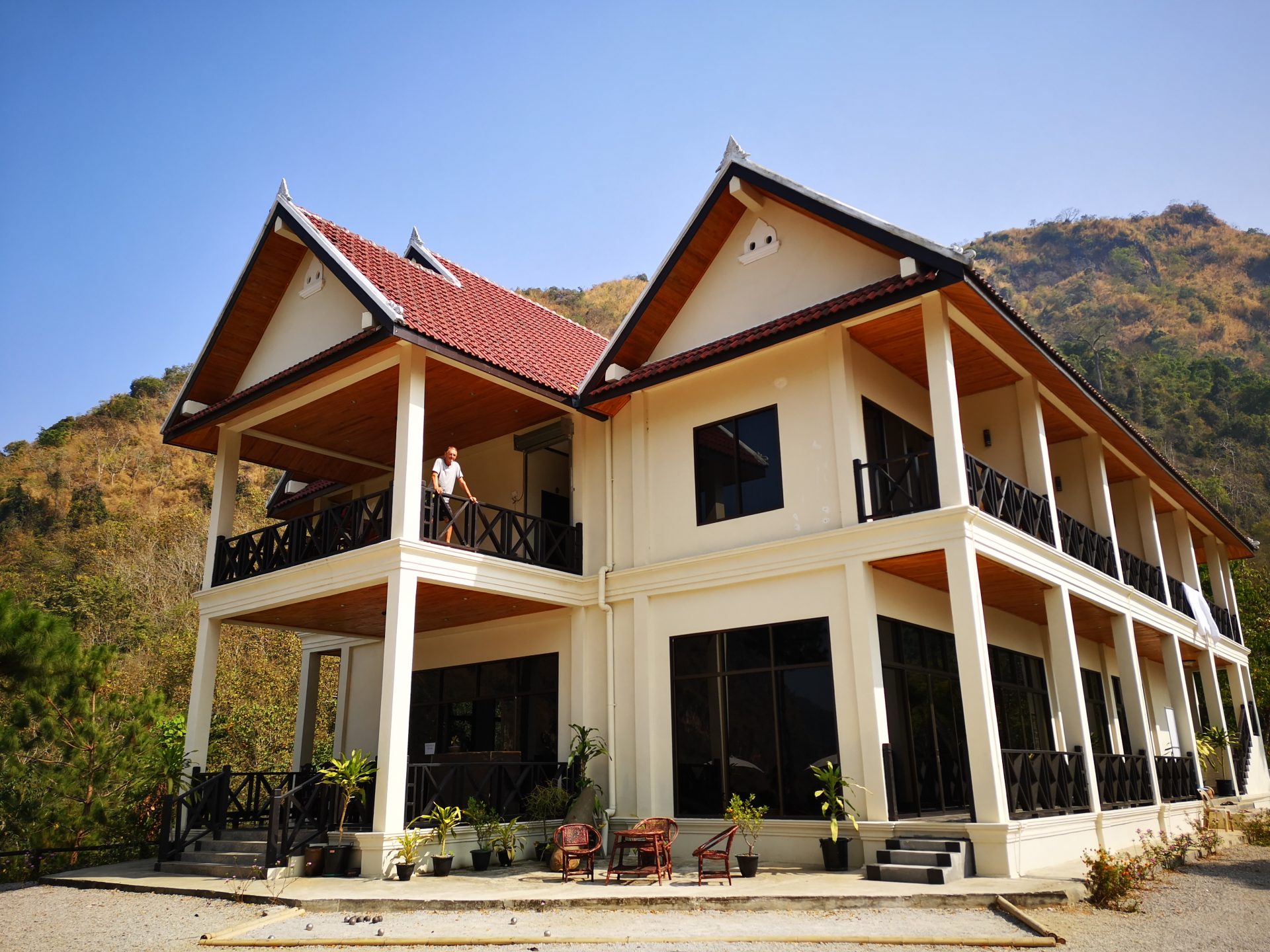

The Very Comfortable & Hospitable Viewpoint Hotel
Why It’s Called The Viewpoint.
Watching these young travellers has prompted me to recall my first independent wanderings overseas as a teenager. It was 1974, the summer of my eighteenth year. In the seventies so much of the planet was not as easily accessible as it is today. In Europe, travel to eastern Europe, behind the Iron Curtain, was difficult if not impossible. Whilst one could travel to Spain or Portugal, the former was governed by fascists and the latter had just experienced a military coup. And in Southeast Asia – Vietnam, Laos and Cambodia – war was raging. Long haul flights were very expensive and, people forget this, UK citizens were restricted to taking out only £65 when they travelled overseas (but lots of people, including my parents ignored this currency restriction).
I knew about the existence of the hippy trail overland to the Indian Subcontinent (travelling in a fried-out Kombi, on a hippie trail, head full of zombie!! You know the song?) but I was just a bit too young and a bit green behind the ears. So the most popular travel opportunity for an eighteen year old in 1974 was to buy an InterRail Pass and trundle around Europe by train. InterRail passes still exist today but back then the deal was that for about £60 you could travel anywhere on the European railway network, from the Arctic circle to Greece, for a month, excluding your home country.
I’d just split with my girlfriend of two years. I was heartbroken but it was never destined to last – my adult life had only just started and I was desperate to get away from Swindon (a town in the west of England).
I packed an ancient army surplus rucksack and, armed with an InterRail Pass and Thomas Cook’s European railway timetable – about the size of a small Bible with the times of departure and arrival times of every train in Europe – I happily waved goodbye to Swindon.
Although I was traveling alone I wasn’t being particularly adventurous. At Dover I boarded the ferry to Ostende in Belgium, a country I’d visited about twenty times throughout my childhood. From there I visited my cousins in the north of the country. I can’t recall how long I stayed but the clock was ticking on my one month rail pass so I would have got moving. I remember taking a train across the German border to Aachen. Here I met a couple of young English guys who told me they’d found this ‘really cheap’ place to stay for the night. We bought bottles of good German beer and slept on park benches near the station!
Over the next few weeks I chugged slowly (Rapido or Express trains cost extra) through Germany, Austria, France, Switzerland and Italy. I can remember only snapshots. I met some interesting girls – but I was still heartbroken. I saw my first ever topless sunbather in Nice. I visited the opera in Vienna (£5 for a standing ticket at the National Opera for The Magic Flute). I was amazed by Venice where an American traveller had recently and famously telegrammed home: Have arrived Venice. Find all streets flooded. Please advise.
I stayed mostly in Youth Hostels or cheap Pensions. In Rome, at the central bus station, I asked a Roman to please direct me to the bus for the Youth Hostel, a famous fascist construction built during Mussolini’s time – but never intended to be a Youth Hostel. He waved me towards a crowded bus that took me miles outside the city, nowhere near the Hostel, and dumped me at some sort of festival site – brilliant I thought – Glastonbury! Music! Unfortunately it was a huge Communist rally – I recall hammer and sickle flags, excitable Italioano Reds inside crowded marquees, preaching Marxist doctrine, lots of really cheap but very good italian table wine, and great pasta and bread. I was a drunk, unconverted capitalist when I finally made it to the Hostel.
I think I was about three weeks into my month when I realised I wouldn’t have enough money to last the remaining week. I planned a route home. In Bologna I boarded the wrong train. Realising my mistake just before it departed, I jumped off and watched it pull away. Gathering my belongings I realised I’d left a small bag on the train containing, amongst other things, my Thomas Cook Railway Timetable. A disaster, like losing your smartphone.
A little closer to home, in a now forgotten provincial Italian railway station, I was waiting for a train, chatting to a fellow InterRailer, when he pointed to a couple a Italian guys further down the platform. Look, he said, that guy’s got a gun. One of the young Italians was fooling about with a pistol. He raised it, pointed it at me and laughed. I knew he was only fooling around but it shook me. It was the first and last time in my life that anybody has pointed a gun at me.
At the Swiss border, the border guard gave me a very hard time. I had shoulder length hair and he seemed to be convinced that I was carrying narcotics (I wasn’t). He didn’t strip search me but I was frisked and my rucksack was emptied onto a table and the contents were worked through meticulously.
Was my journey an adventure? Yes I guess it was. But I made little effort for it to be one. Things just happened.The young of today are blessed with such fantastic travel opportunities but they are, I feel, too corralled, and adventure eludes them.
Enough of this diversion. Climbing to the viewpoints is wonderful. We start early, about 7am, when the land is shrouded in mist and it’s slightly chilly. Fifteen minutes from our hotel we arrive at the base of any of the five trails up to a wooden viewing platform. There’s a small fee to pay, the trails are marvels of rudimentary engineering, using hardwood branches, bamboo, some concrete and lots of string and wire, which need constant maintenance.
The toughest climb of about a thousand metres to the summit viewing platform takes us two hours. We are both sodden with perspiration when we get there but the view from here across the cotton wool clouds of the valleys below is astounding. The surrounding mountains emerge as if from an ocean and aside from the occasional birdsong, it is silent. We spend an hour and a half up here, taking photographs, eating our packed breakfasts, resting, and simply absorbing the beauty of it all. We stay until the clouds below disperse, revealing the village and the river valley.
Whilst the ascents of these trails are hard on the legs, heart and lungs, the descents are made slowly and methodically and it’s the knees and ankles that take the strain, joints that Jo still needs to treat with some care. I’ve heard it said that the construction of jigsaw puzzles is good for the avoidance of dementia. It exercises those parts of the brain that are prone to the disease. Descending a rock strewn trail is a bit like doing such a puzzle – you’re constantly looking for the right location to place a foot for the next step down. Our two hour ascent of the longest trail takes us almost three hours to descend. It is during the descent that we can really enjoy the forest. Some of the trees are ancient and huge with fin like buttress roots at the base of their trunks. But even with Google’s assistance I can’t identify them. There’s no getting off the trail if you have a call of nature – we’re in UXO land where unexploded bombs still pepper the landscape.
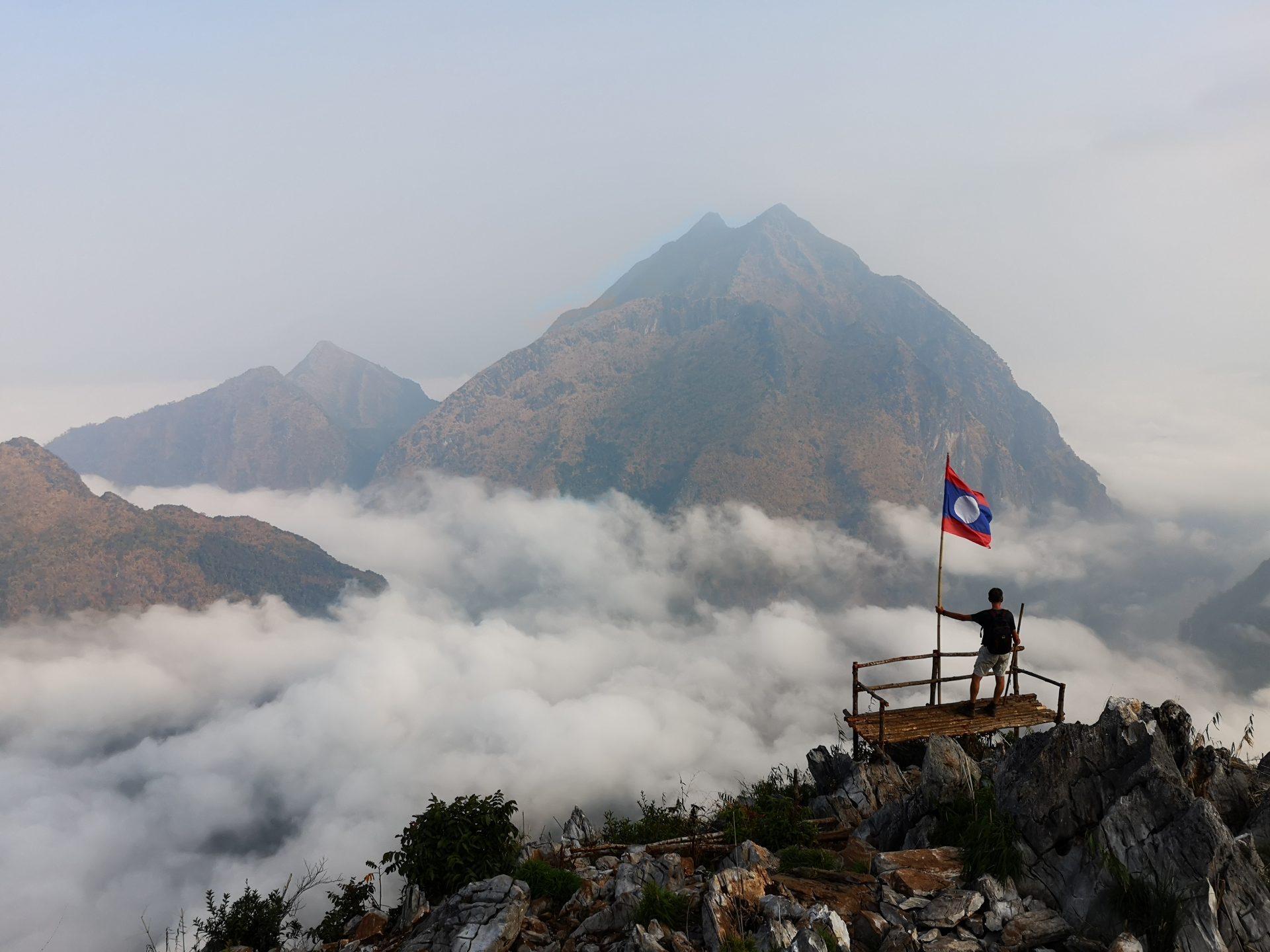
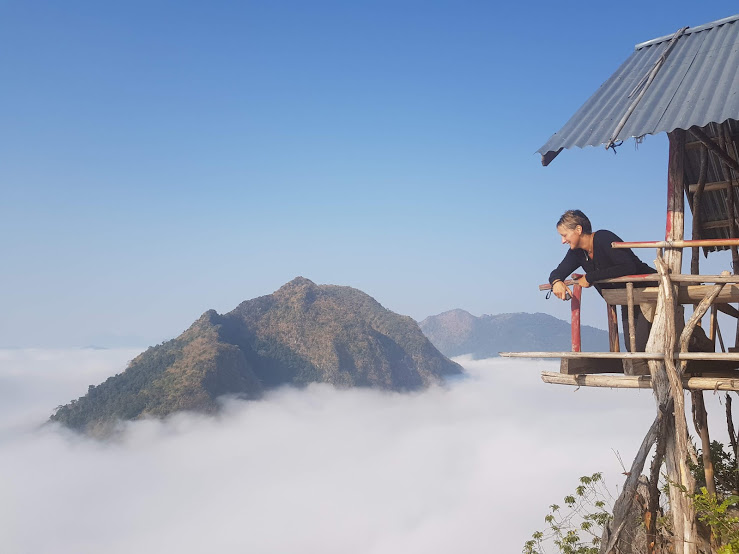
It takes a morning to do a viewpoint climb which leaves the remainder of the day free for reading and writing in the sun. In the evenings we wander into the village for cheap Pad Thai noodles or a massaman curry. One evening we push the boat out at the hotel and have duck breasts with a pepper sauce and a splendid Chilean Cabernet Sauvignon. There’s a petanque terrain outside the hotel, it’s very popular in Laos and the locals are enthusiastic players, so we play a few ends of boule after dinner.
We book one tour during our stay. A boat ride down the river to a local village, a walk to a waterfall and a kayak paddle back to Nong Khiaw. Our small group of Europeans: Dutch, French, German and a Canadian are a bit miserable, or is miserly the word. No donations to the local village school and no tip for the guide (we contributed to both). The boat ride is a pleasure. The waterfall is underwhelming as it’s the dry season, but Jo and I plunge into the freezing water. And the kayaking is a pleasure too – except that Jo appoints herself captain, helmsman and navigator. I’m the humble oarsman which causes a little tension.
Jo has said, on several occasions during our stay at The Viewpoint Hotel, in Nong khiaw, – I love this place, it’s so peaceful and beautiful. We’d originally booked for one night and we’ve continually extended our stay. After six days, we extend for nine and Jesse, our friendly Canadian hotel owner tells us that we are his longest staying guests and he gives us a night for free! We really should have our portraits hanging in reception.
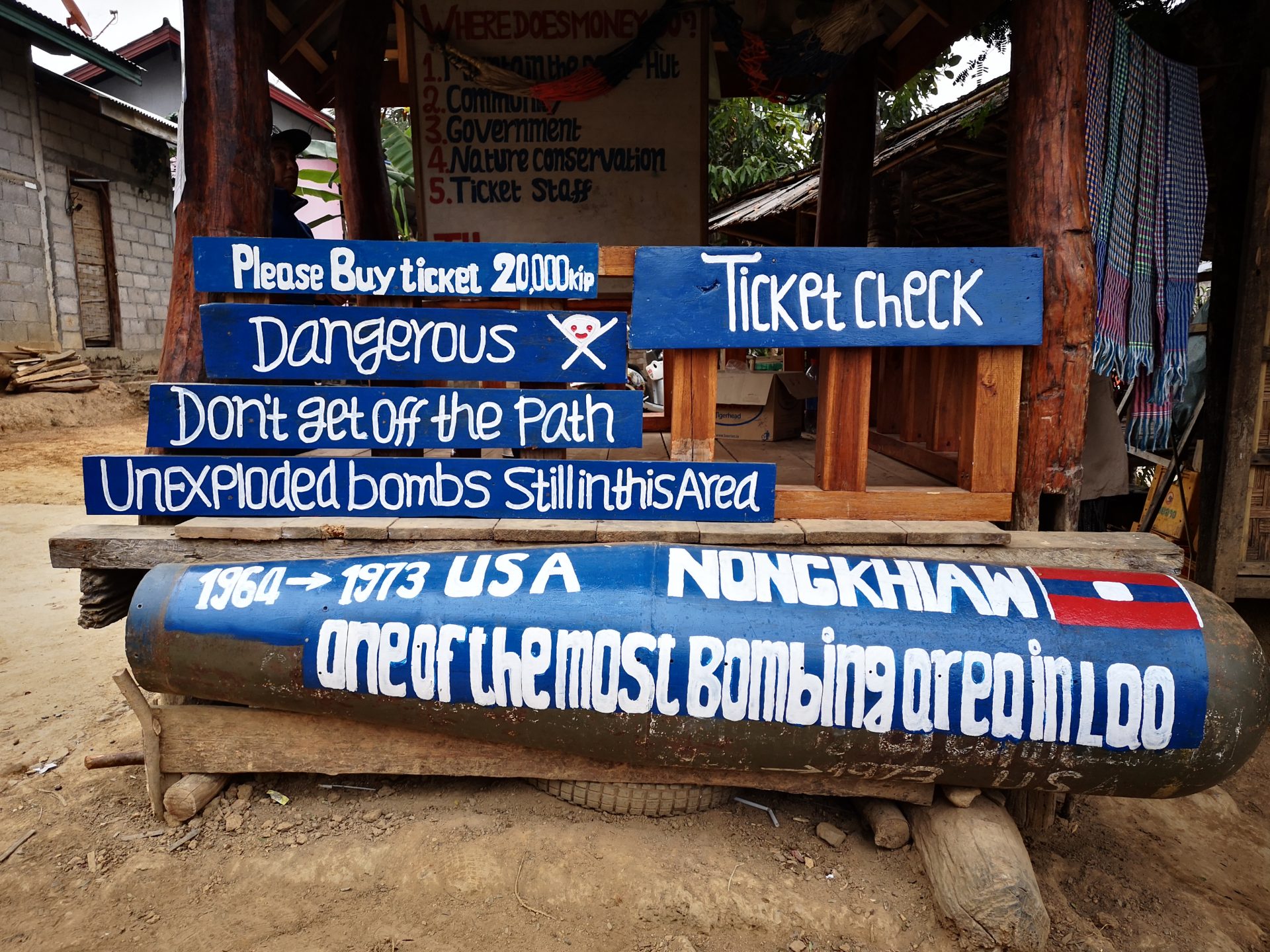
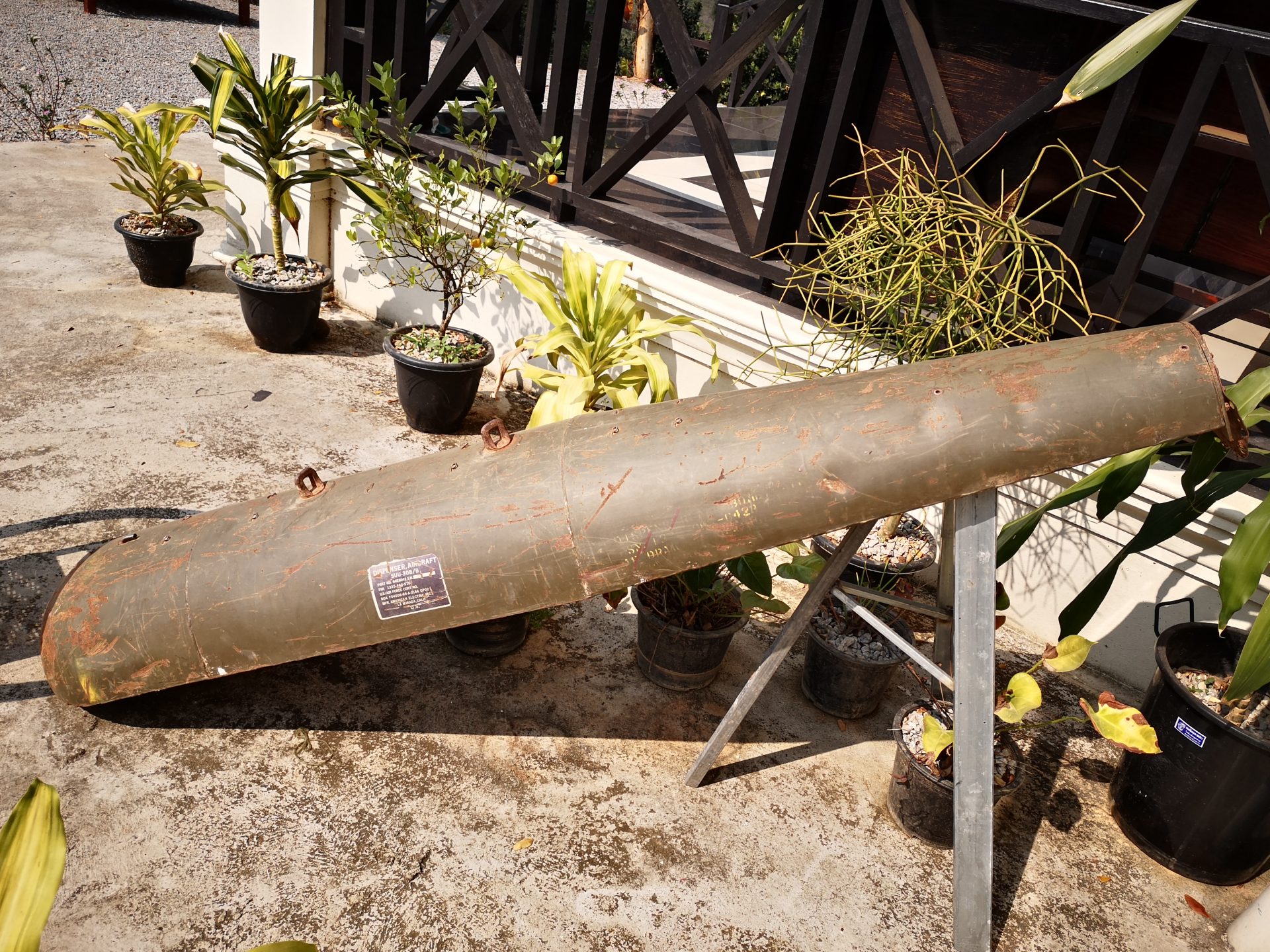
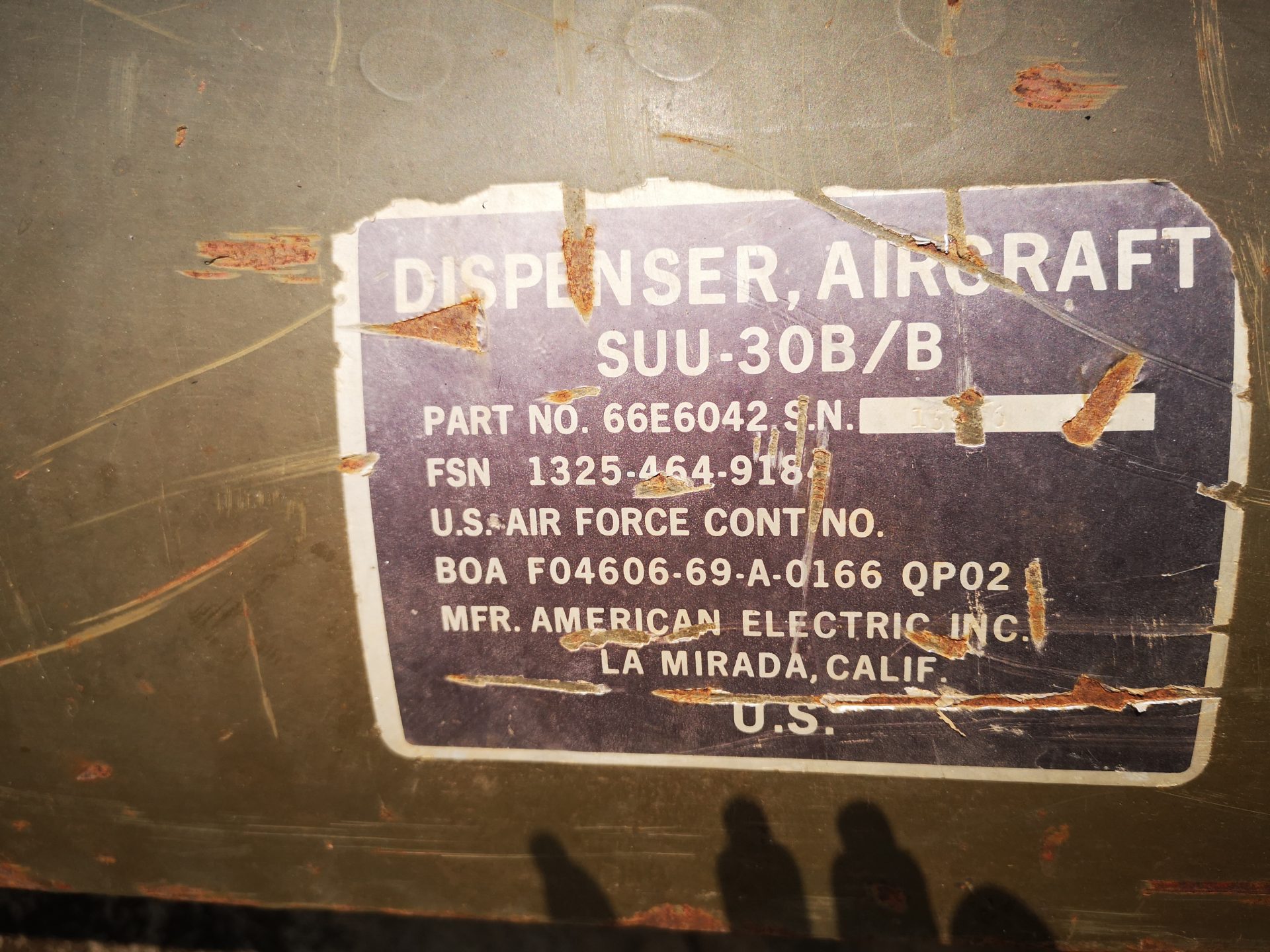
In The Thick of UXO Territory Where Bombs Still Litter The Countryside

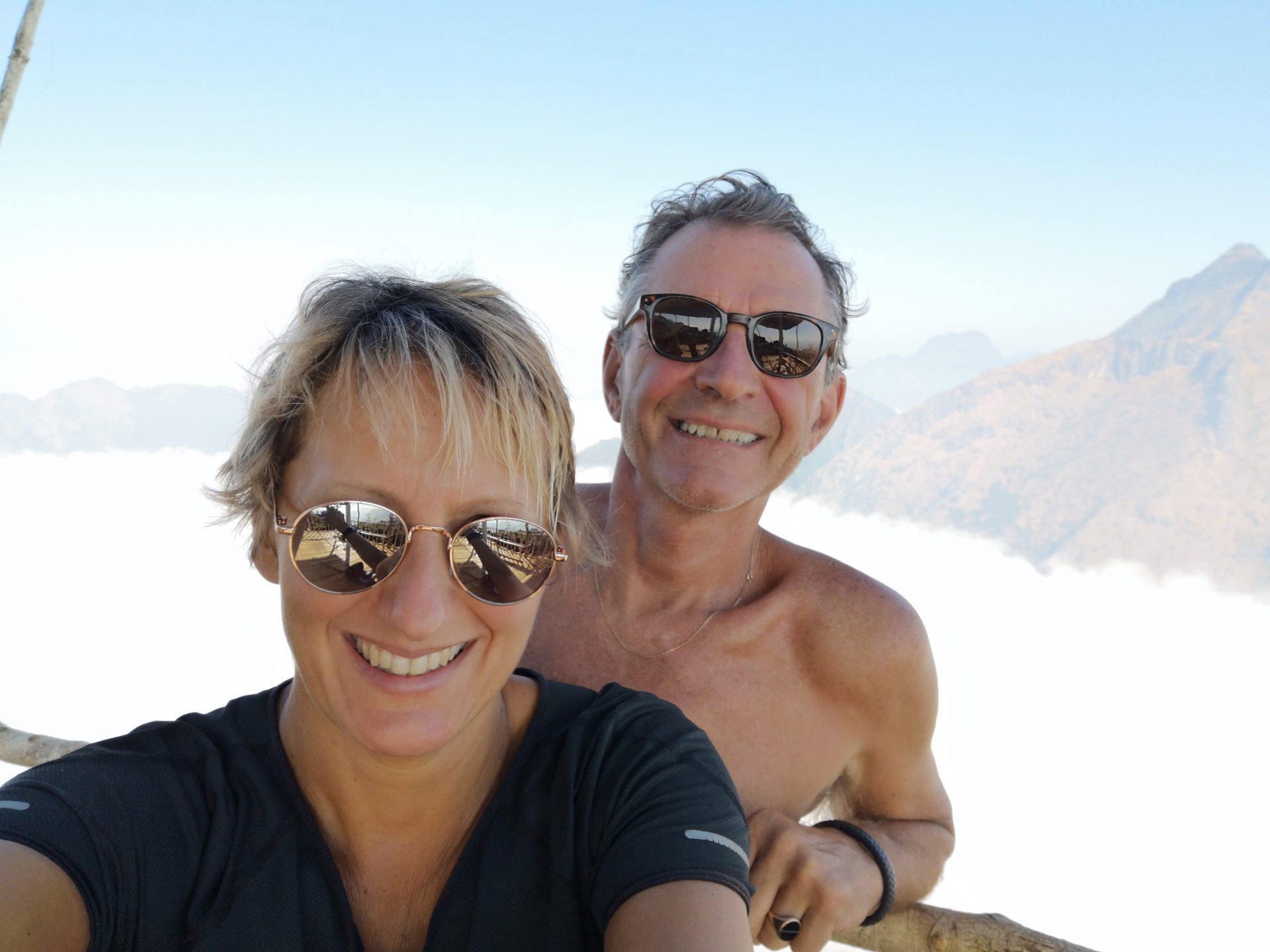

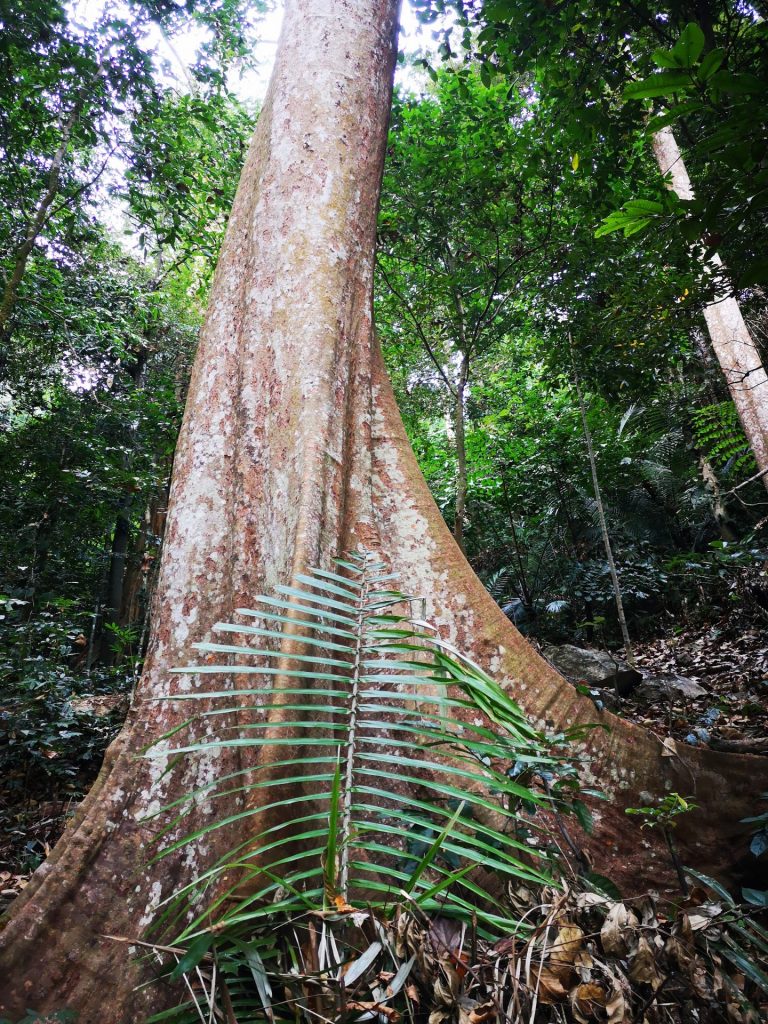

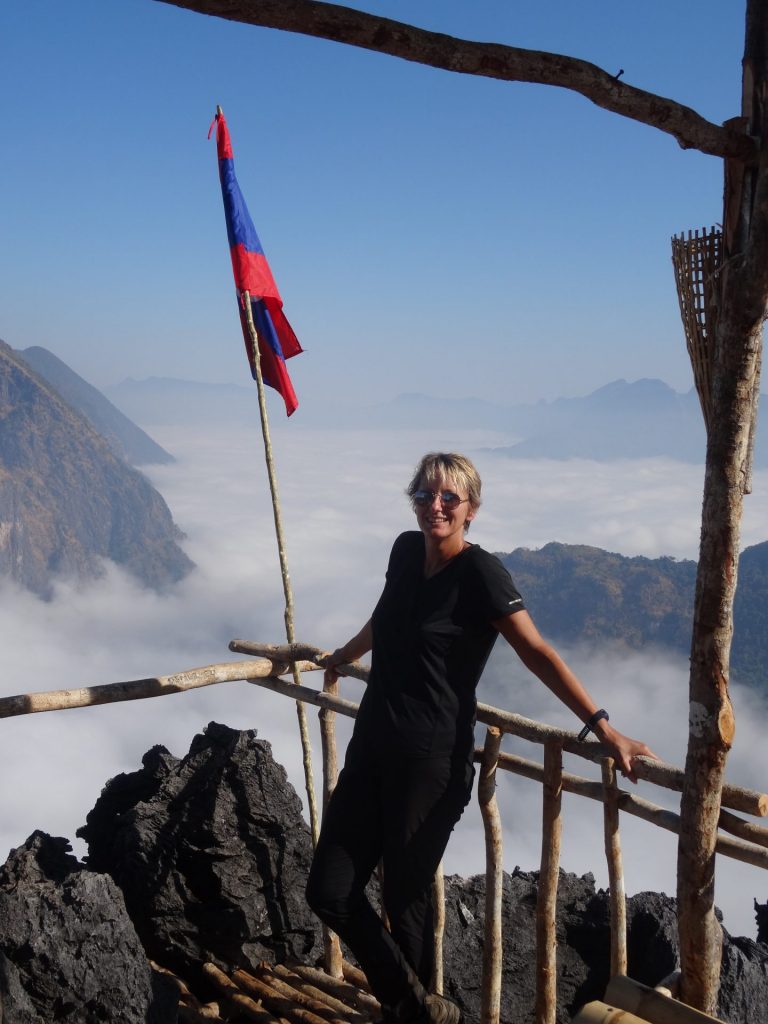
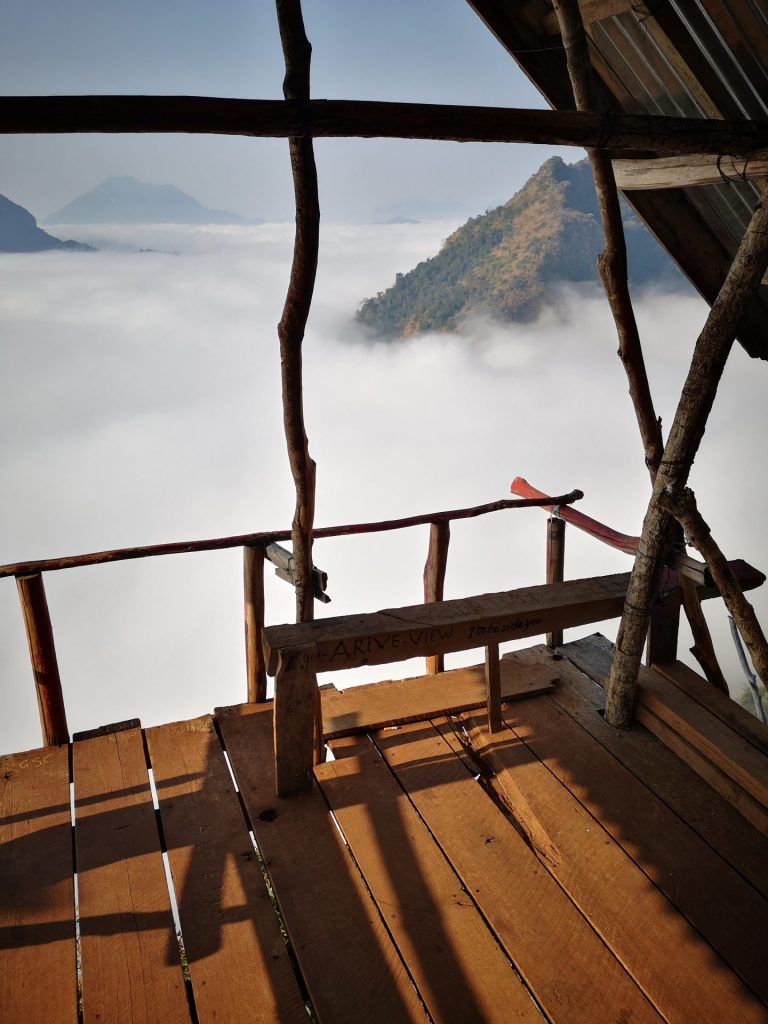
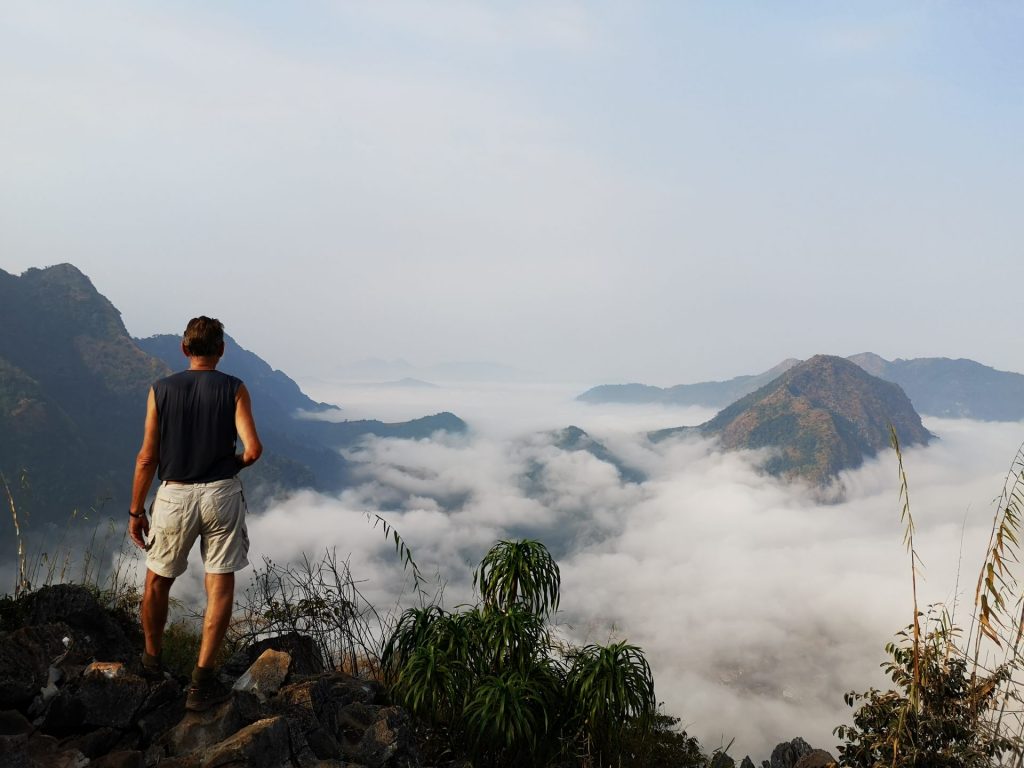



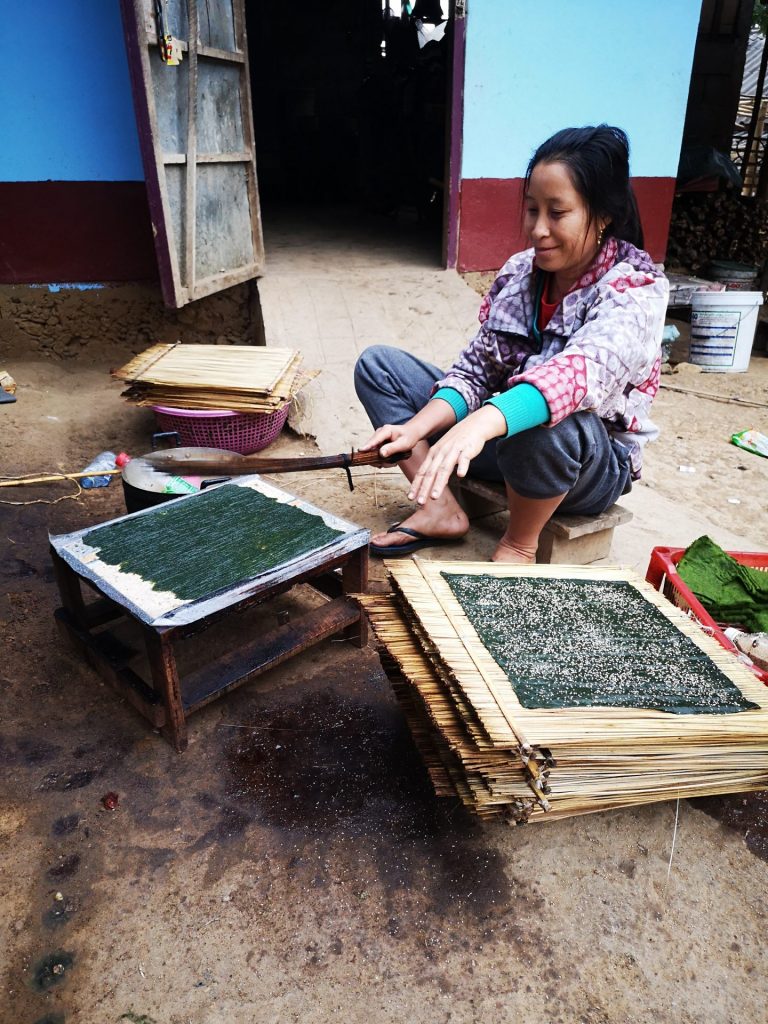
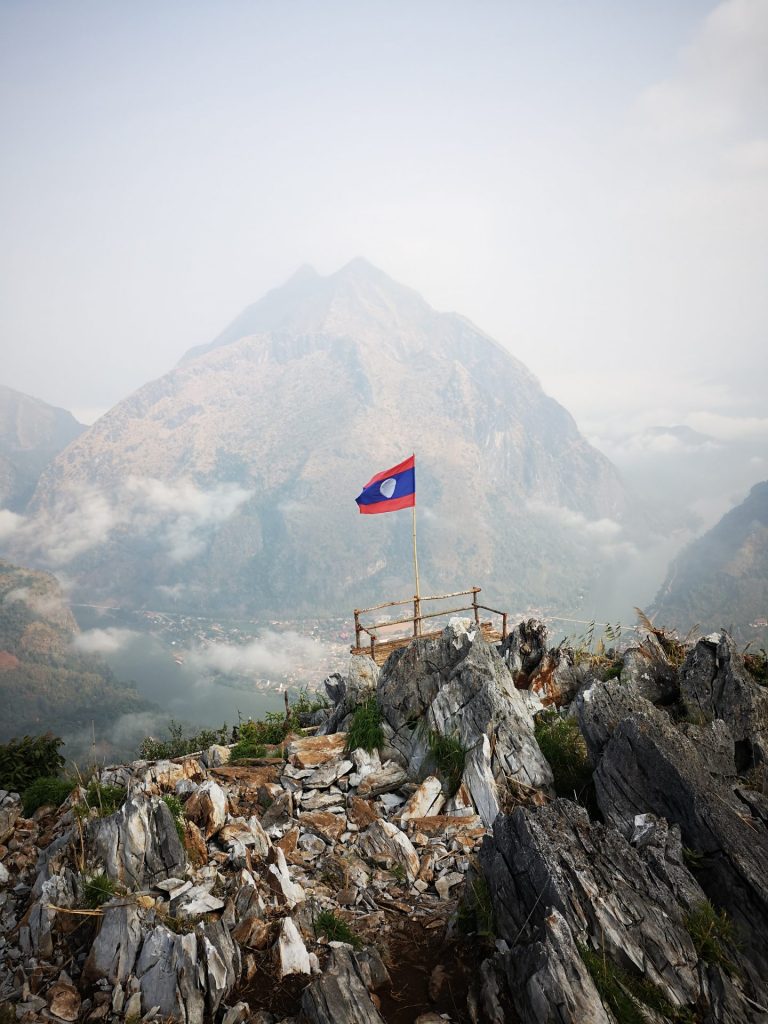
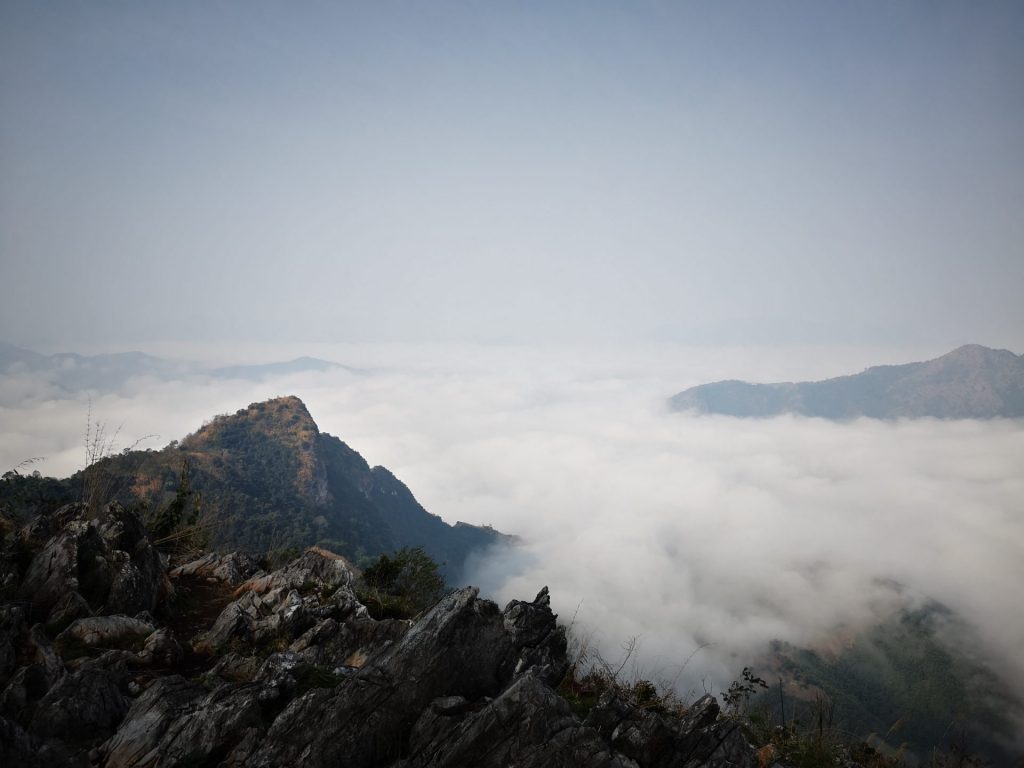
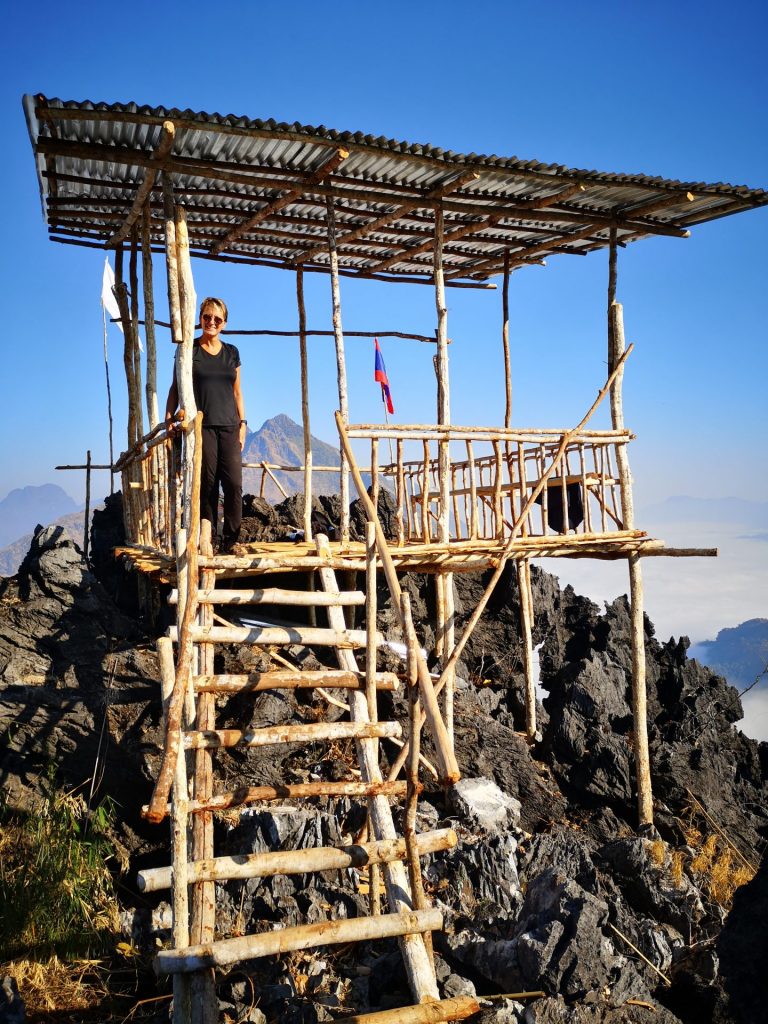
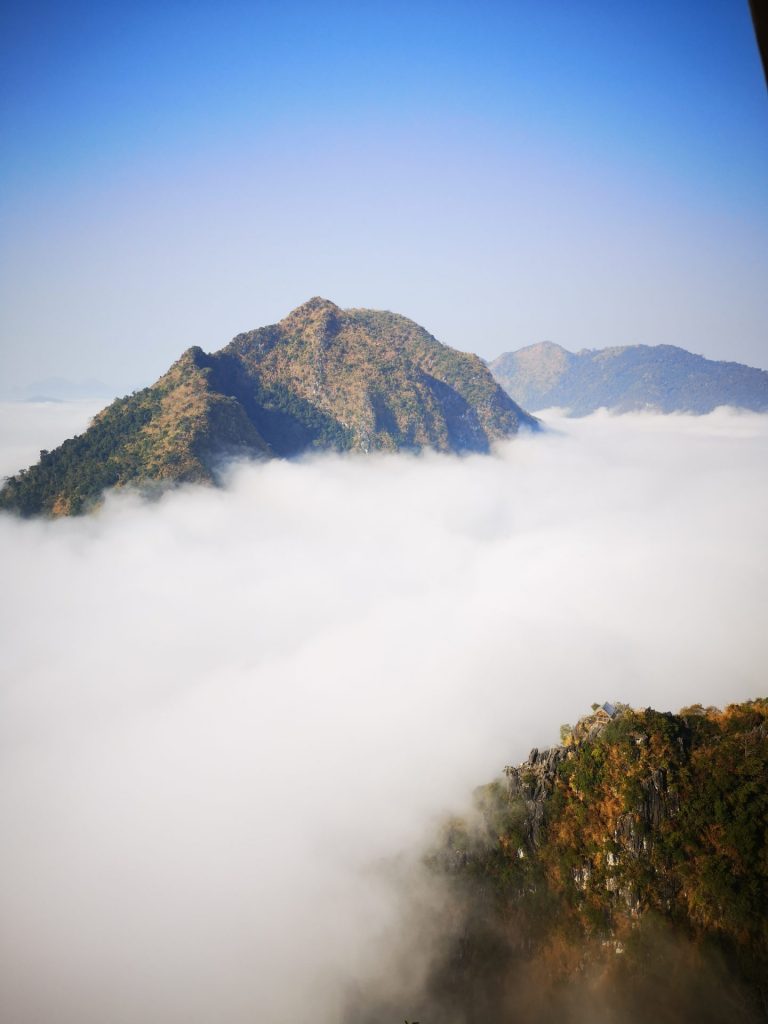
What a lovely story sounds like you had a really wonderfull time.